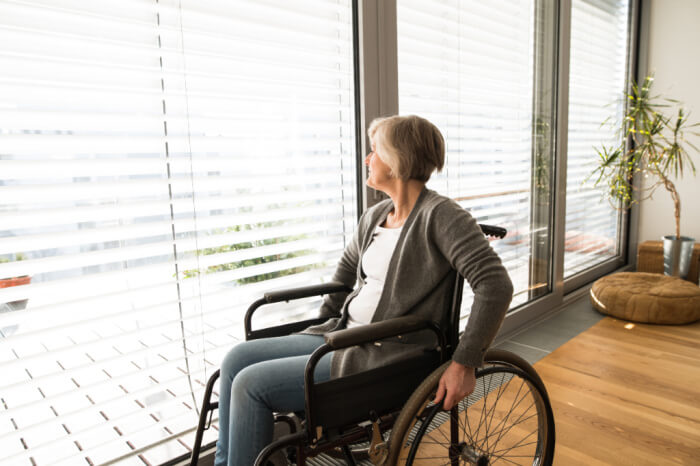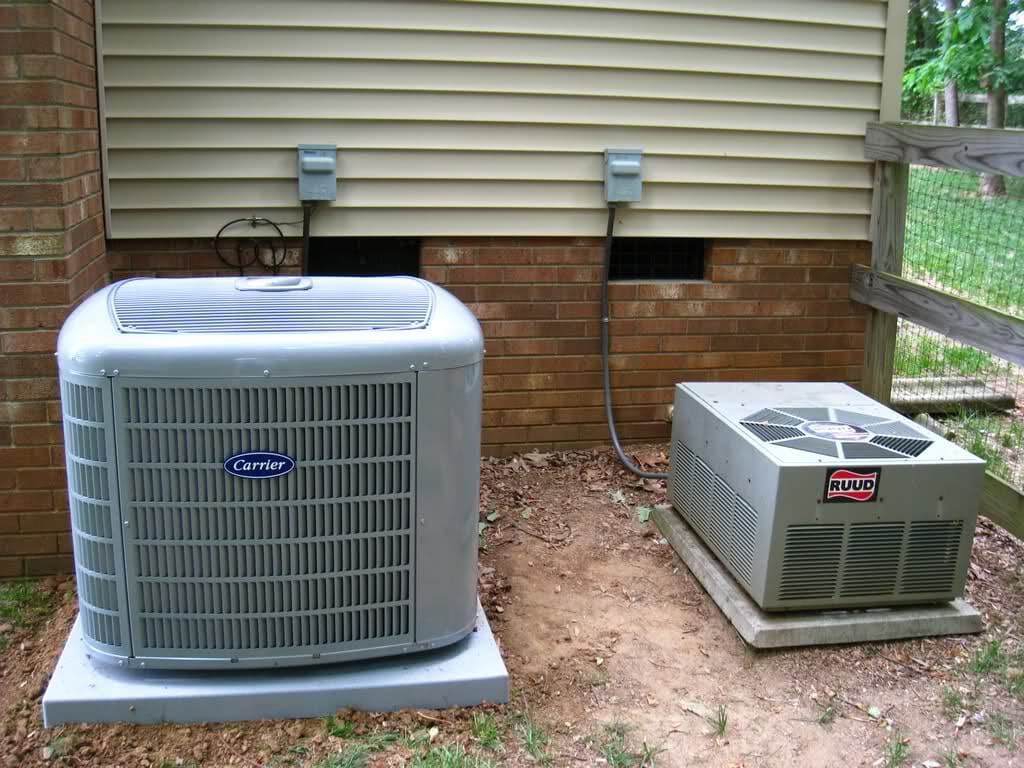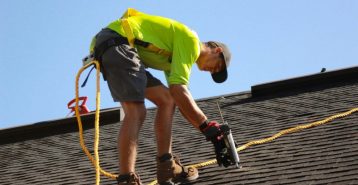Are you doing a home improvement project?
Modernize can pair you with three to four pros in your area, so you can compare options and save time and money.
As the population grows older, more and more individuals are considering how they want to live out their golden years. Aging in place, or living in their home for as long as possible, has become a serious consideration for those who don’t want to move away from the place they’ve known for years.
In a recent 2021 Modernize survey, 63 percent of homeowners shared they plan to explore home accessibility improvements in the next 12 months. The most common projects listed were walk-in tubs, medical alerts, and adding a seat within a shower.
If you are also considering aging in place home improvements, or have a loved one who wants to stay in their beloved home as long as they can, this home accessibility checklist is for you. It covers the small things you can do to make life easier immediately, as well as the more involved issues you can tackle with a contractor that will provide the home comforts you need.
Aging in Place Checklist: The Basics
These simple modifications might not require a contractor. They can make life safer and easier very quickly, without much of a money or time investment.
- Install levered door handles for ease of use.
- Install grab bars in the bath, shower, and near the toilet to help prevent falls.
- Remove throw rugs to create clear passages.
- Add more lighting to hallways, bathrooms, bedrooms, and anywhere else a person might walk through in the middle of the night. Motion-sensing lights are often a great option for additional peace of mind.
- If your home has steps, install sturdy handrails on both sides, if possible.
- Consider replacing kitchen and bathroom faucets with levered or motion-sensing models.
- Add a fold-down seat in the shower.
- Choose detachable and adjustable showerheads with at least a six-inch reach.
- Intercom systems can allow someone to call for help from anywhere in the home.
- Rocker or touch light switches are great for those with limited mobility.
- Consider using audible and visual strobe light systems, such as flashing phones for the hearing impaired or loud alarms for the vision impaired.
- Add accented stripes on the edge of all countertops for visual orientation.
- Place task lighting in strategic areas in the kitchen.
- Add bright lights to shower spaces.
- Carefully choose appliances for ease of use, such as:
- Side-by-side refrigerator/freezer
- Dishwasher with push-button controls
- Microwave at countertop height or built into the wall low enough for use by those in wheelchairs
- Front-loading laundry machines raised at least a foot off the floor
- Stove burners with controls placed in front
- Wall oven with easy-to-read, well-lit controls that take the guesswork out of cooking.
- Install loop handles in the kitchen and bathroom for easy gripping and pulling.
- Invest in an easy-to-read, programmable thermostat installed no higher than 48 inches from the floor.
- Install self-feeding systems for homes with pets.
Minor Improvements for Aging in Place
These are modifications that can be easy to implement with the help of a contractor.
- If the home has stairs, a stairlift can help ensure no one gets hurt in a tumble down the steps.
- Replace the shelving in lower cabinets with pull-out shelves; add in lazy susans for even more ease of use. Consider pull-down shelving as well.
- Install an entry door with sidelights for a better view of who is outside.
- Make all thresholds flush so there is no risk of tripping in a doorway.
- Choose sturdy, non-slip flooring that requires little maintenance.
- Install countertops of varying heights or adjustable countertops and removable base cabinets.
- Any upper wall cabinetry should be three inches lower than the typical height (or even lower, depending upon specific needs).
- Create under-counter seated work areas for ease of food preparation.
- Glass-front cabinet doors or open shelving make it easier to see and retrieve whatever is needed.
- Install raised toilets or those with adjustable seats.
- Use wall-hung sinks with a panel to protect occupants from the pipes underneath.
- Turn to smart home wiring for internet access, security system, and ease of using certain comforts, such as turning off lights from anywhere in the home.
- Add extra light switches, such as an additional switch at the far end of a hallway.
- Make the most of lighting with fixtures that hold two bulbs; if one burns out, the other still provides light until the blown bulb can be replaced. Go with LED lights for even more longevity.
- All shelves in the home, including those in closets, should be easily adjustable for height.
Major Improvements for Better Peace of Mind
These changes require the help of a contractor and might be considered major construction; in some cases, permits might be required.
Find the Right Contractor for Your Project
Whether you’re ready to begin your project now or need some expert advice, our network of contractors are here to help. With a few simple questions, we’ll find the best local professionals for you
- A walk-in tub can often fit into the space your old tub occupied; you can opt for combo versions that include a shower, which can be helpful if you live in a multi-generational household.
- Any other type of shower should have a flat threshold; slope the shower floor toward the drain to prevent splashes on the bathroom tile.
- Consider placing tub and shower controls off-center to help prevent injury in case of falls.
- A laundry chute from the master bedroom in a two-story home creates peace of mind.
- Install an elevator to carry individuals, or a dumbwaiter to carry packages and other items.
- Widen doors for easier wheelchair access; 36-inch doors are recommended. Widen hallways if possible.
- Install ramps at entry doors for safety and wheelchair access.
- Consider windows installed at a lower level, or taller windows with a lower sill height. Windows should have easy-to-use hardware. Ensure the windows slide easily for safety and fresh air.
- Widen the average carport to accommodate wheelchair-accessible vans.
- Increase garage door heights to nine feet to accommodate raised roof vans.
- Extend a two-car garage to allow at least five feet of space between an accessible van and any other vehicle in the garage.
- Wire the home directly to 911 services; adding a flashing porch light for responders to easily spot is helpful peace of mind.
Though this home accessibility checklist touches on most of the points to ponder for universal design or modifying a home for aging in place, the particular situation for you or a loved one can mean other changes might be necessary. We have also created this aging in place checklist as you prepare for the future.
If you are considering a home accessibility project soon, it may also be helpful to note that there are payment and insurance coverage options available to help you cover the cost.
To help determine exactly what you need, Modernize can connect you with contractors in your local area who are knowledgeable in universal design and the needs of those who want to age in place. Let Modernize help give you peace of mind.

Find the Right Contractor for Your Project
Whether you’re ready to begin your project now or need some expert advice, our network of contractors are here to help. With a few simple questions, we’ll find the best local professionals for you
Reviews from Real Homeowners
Welcome to Homeowner Resources! We are the Modernize blog. Modernize pairs more than 3 million homeowners a year with pre-vetted contractors in their area. This blog started because we believe homeowners should know everything about their homes, from how their HVAC works to which front door colors they might love. On Homeowner Resources, you can find information on every part of your home, right down to how you can negotiate with contractors to get the best price. Here's more about the blog.
Need a contractor? Learn more about how Modernize finds the right pro for you.




